

EMI Cassette Tapes
#17. Rock 'N' Roll Music (TC2-PCSP 719)
(Update: 14th. March 2024)




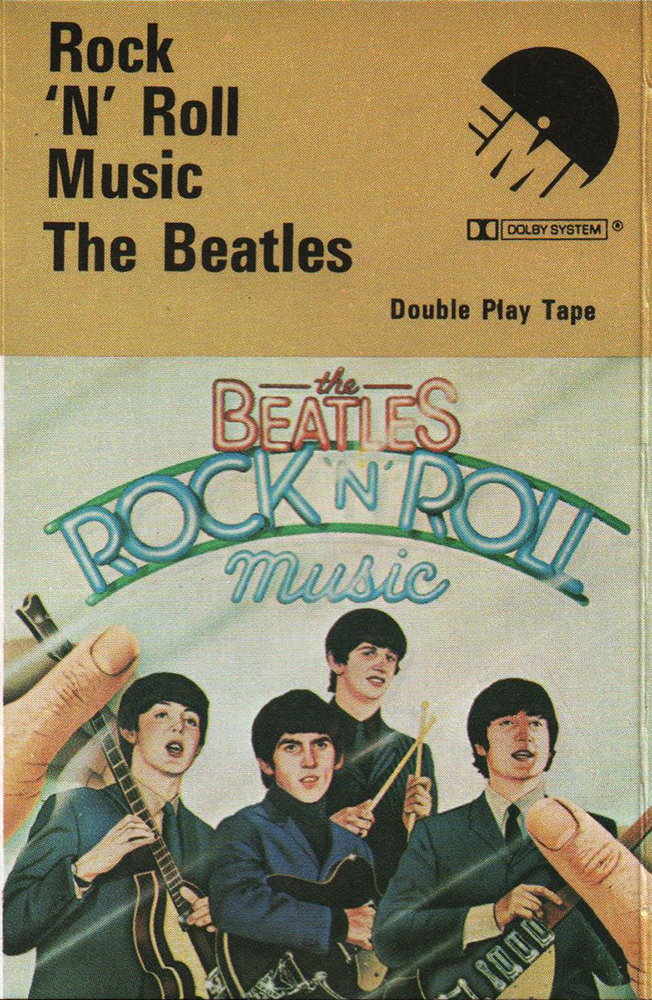 |
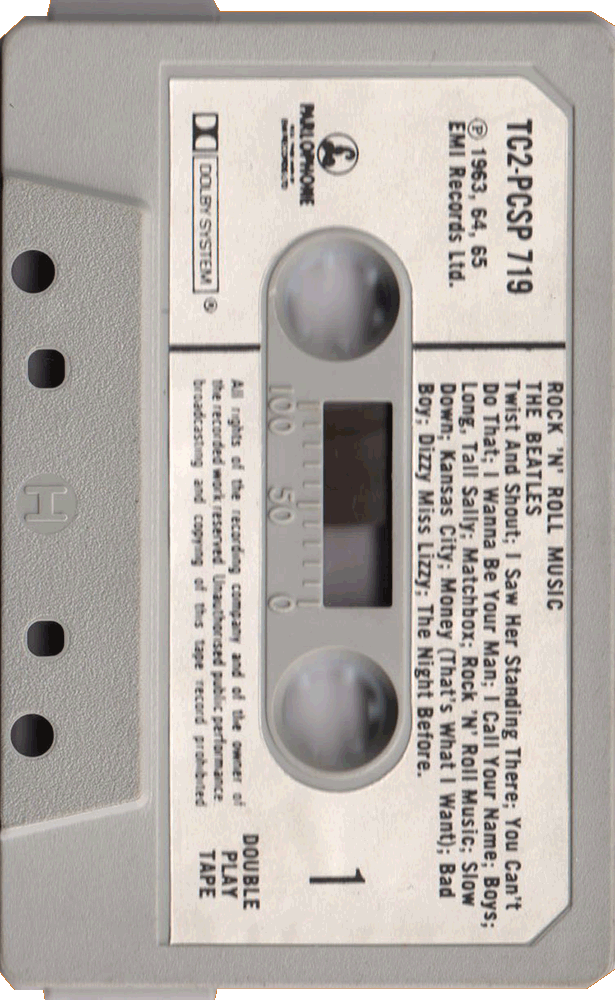 |
|
|
| Ochre Inlay and
Tape |
|||
|
TITLE
|
Rock 'N' Roll
Music |
|||
| CATALOG NUMBER | TC2-PCS 719 / 0C 284 o 06153 |
|||
|
RELEASE DATE
|
July 1976 / First Issue | |||
| TRACK LISTING | SIDE 1 | SIDE 2 | ||
| Twist And Shout [A1] |
Roll Over Beethoven [B7] |
|||
| I Saw Her Standing There [A2] |
Anytime At All [C2] |
|||
| You Can't Do That [A3] |
Drive My Car [C3] |
|||
| I Wanna Be Your Man [A4] |
Everybody's Trying To Be My Baby [C4] |
|||
| I Call Your Name [A5] |
I'm Down [C6] |
|||
| Boys [A6] |
Revolution [C7] |
|||
| Long Tall Sally [A7] |
Back In The U.S.S.R. [D1] |
|||
| Matchbox [B6] |
Helter Skelter [D2] |
|||
| Rock 'n' Roll Music [B1] |
Taxman [D3] |
|||
| Slow Down [B2] |
Got To Get You Into My Life [D4] |
|||
| Kansas City [B3] |
Hey Bulldog [D5] |
|||
| Money (That's What I Want) [B4] |
Birthday [D6] |
|||
| Bad Boy [B5] |
Get Back [D7] | |||
| Dizzy Miss Lizzy [C1] |
||||
| The Night Before [C5] | ||||
| CASSETTE CASE AND TAPE |
CASE FRONT | CASE BACK | SIDE 1 --> Click! | SIDE 2 --> Click! |
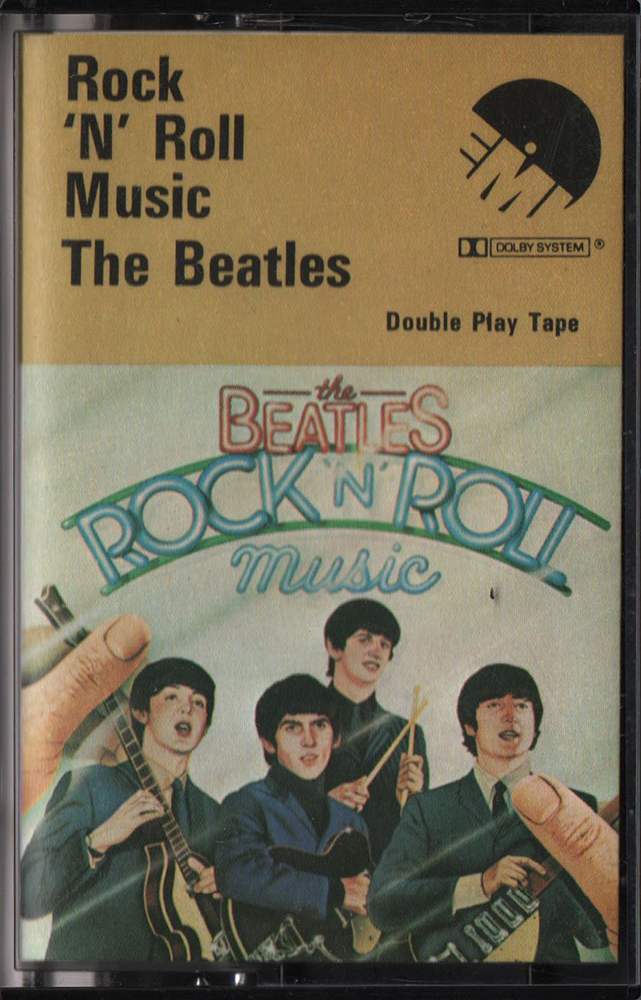 |
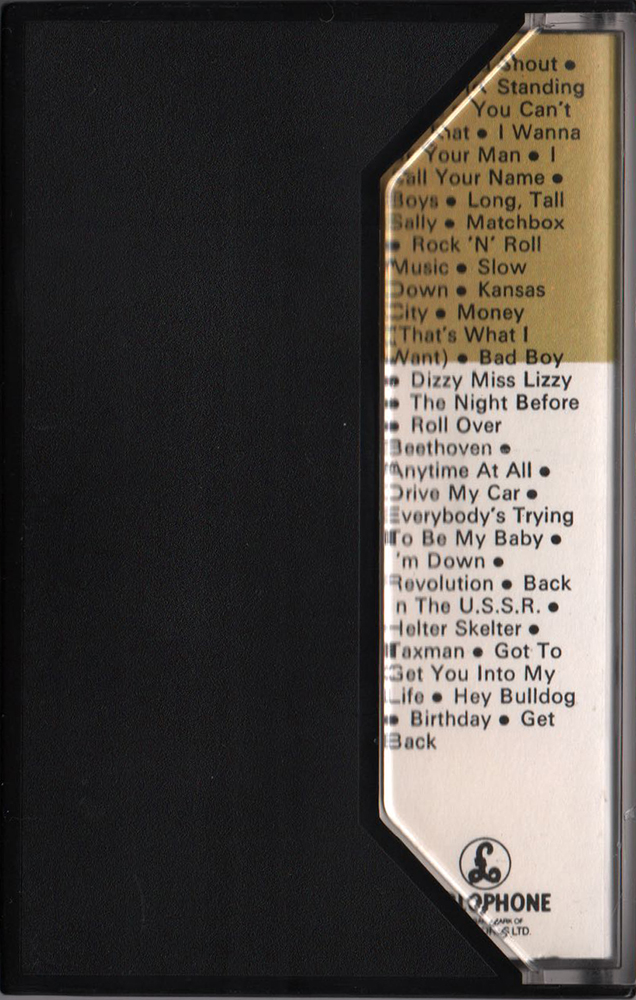 |
 |
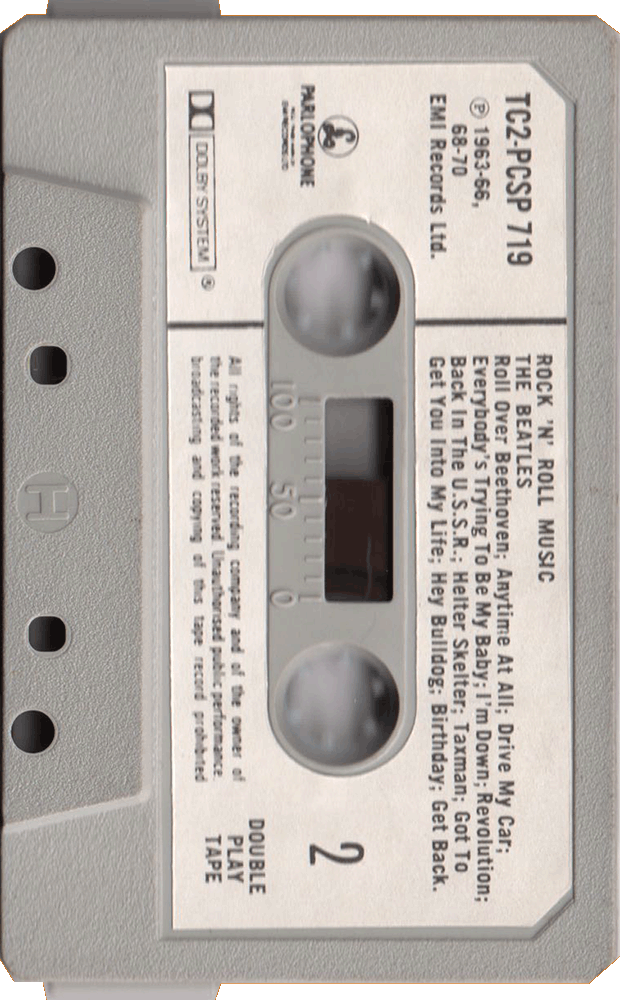 |
|
| The cassette cases ("Norelco" cases)
were clear plastic at the front and around the spine area,
and black plastic at the rear. |
The first UK issue has White paper label with Parlophone
logo |
|||
| INLAY |
INLAY: FRONT | INLAY: INSIDE |
||
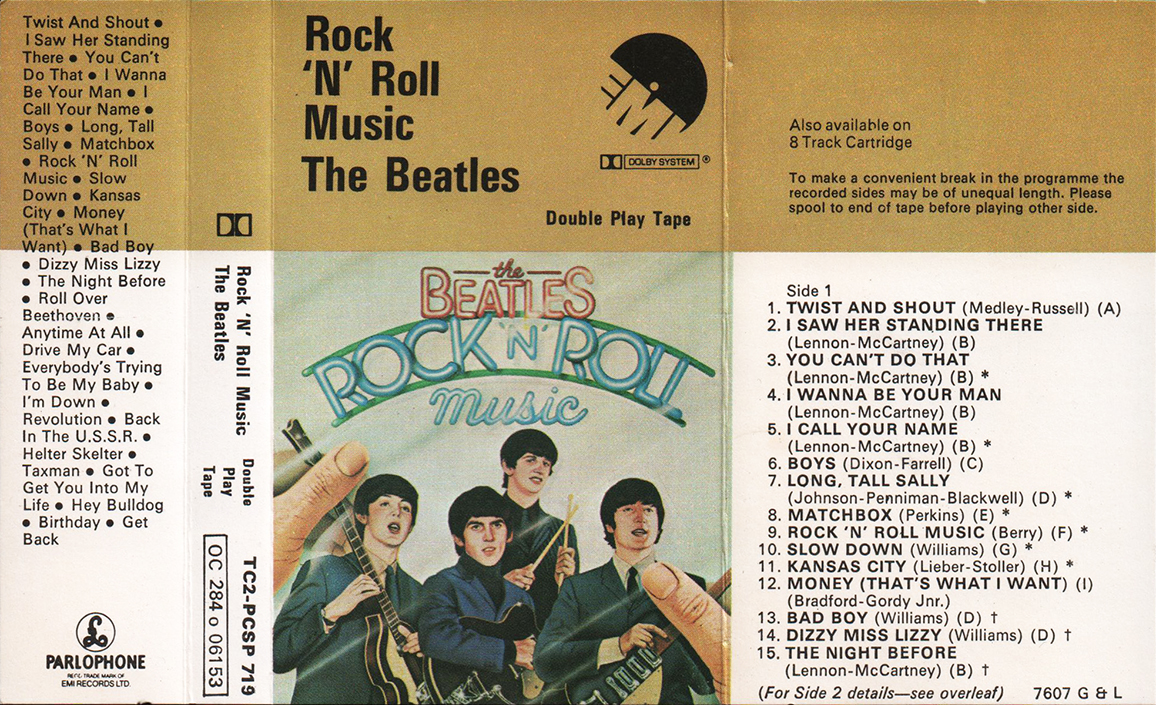 |
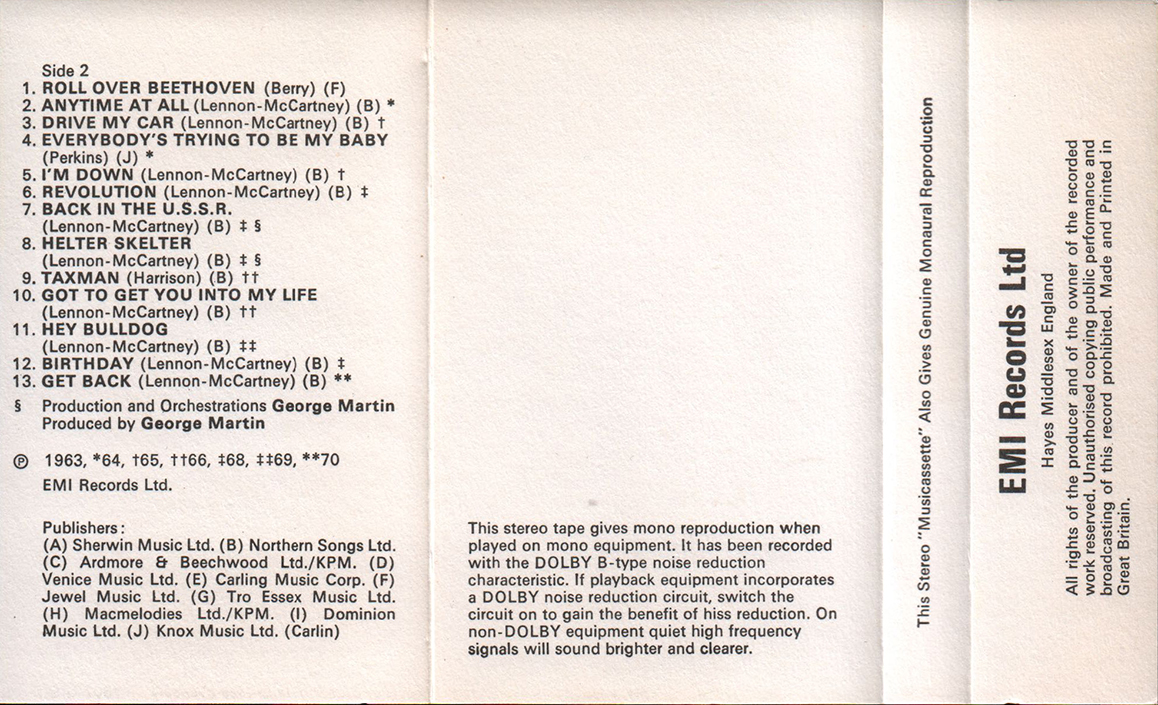 |
|||
| Changed the"Ochre" cassette inlay. Does
not have 'metallic' gold finish. ”Ochre inlay" have been introduced in 1976 (maybe). With "Circular" EMI logo (introduced by EMI from mid-1973). |
||||
| INLAY: FRONT CLOSE UP | ||||
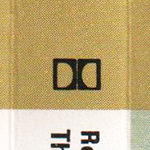 |
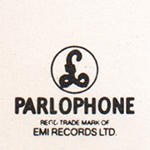 |
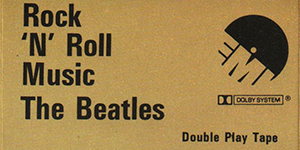 |
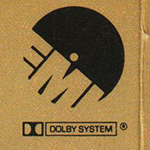 |
|
| The Parlophone and Dolby logomark were printed on the inlay. | EMI "Ochre"
cassette inlay, with "Circular" EMI logo (introduced by EMI
from mid-1973). "DOLBY" logo was printed. |
|||
| INLAY: FRONT CLOSE UP | ||||
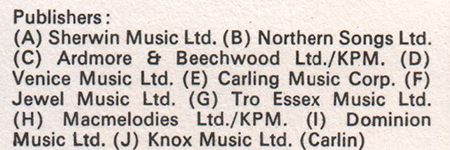 |
Publisher's
names were printed on the inlay. |
|||
| INLAY: FRONT CLOSE UP | ||||
 |
Catalog number "TC2-PCSP 719" and the EMI country code (*1) were printed on the inlay. |  |
Printer company's name and relrease date "7607 G & L" was printed at the bottom of the inlay. | |
| INLAY: FRONT & INSIDE CLOSE UP | ||||
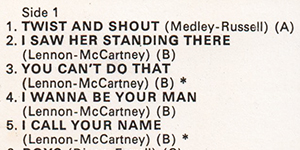 |
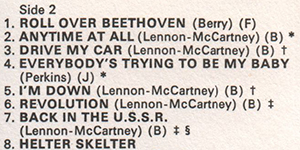 |
EMI originally issued the Beatles UK
albums on cassette tape with re-arranged running orders. |
||
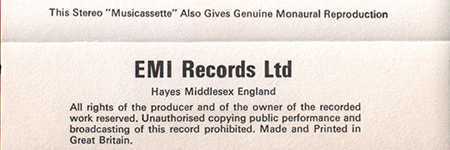 |
"EMI Records
Ltd Hayes Middlesex England" credit and "Made and
Printed in Great Britain" were printed at the bottom of the
inside of the inlay. |
|||
| LABEL CLOSE UP | ||||
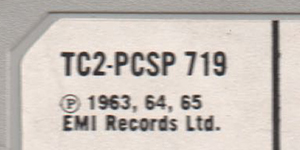 |
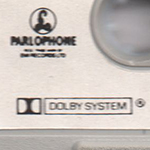 |
"TC2-PCSP 719" catalogue
number, Parlophone logo, and Dolby logo were printed. The "H" mark was moulded into cassette shells. |
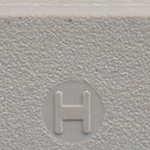 |
|
| LABEL CLOSE UP | ||||
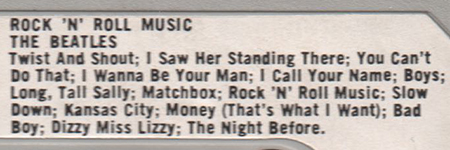 |
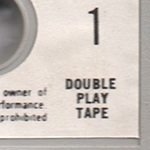 |
EMI originally issued the Beatles UK albums on cassette tape with re-arranged running orders, the reason for this was that because of the 8-track stereo tapes made at the same time, it was necessary to adjust the endless tape's four tracks to be approximately the same length. | ||
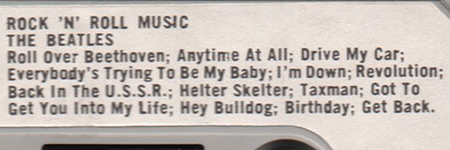 |
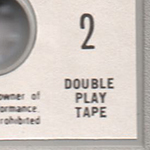 |
|||
| LABEL CLOSE UP | ||||
 |
"Made
in England/Made in U.S.A" was not embossed on the
shell. |
|||
| OTHER ITEM | ||||
| - |
||||
| LABEL | White Paper Label with Parlophone logo |
|||
| MIX | STEREO / DOLBY B-type |
|||
| RECORD COMPANY'S NAME | EMI Records Ltd |
|||
| CENTRAL REMARK "SOLD IN U.K." |
- | |||
| RECORDING PUBLISHED CREDIT | (P) 1963, 64, 65, 66, 68, 69, 70 |
|||
| INLAY FORM | "Ochre" inlay (Foldover) |
|||
| SHELL | Light Grey Shell / embossed "H"
mark |
|||
| CASSETTE CASE |
"Norelco"
cases: clear plastic at the front and around the spine area,
and black plastic at the rear. |
|||
| PRINTER CREDIT | Made and Printed in Great Britain / 7607 G
& L |
|||
| COVER DESIGN/ PHOTO/ NOTES | Art Direction: Ron Kohara Illustrations: Ignachio Gomez |
|||
| PRODUCER | George Martin | |||
| COMMENTS | White paper label with Parlophone
logo cassette, with light grey shell. EMI "Gold Top" cassette inlay, with "Circular" EMI logo (introduced by EMI from mid-1973). “Gold Top inlay” are believed to have been introduced in January 1972. Changed the "Ochre" cassette inlay. Does not have 'metallic' gold finish. ”Ochre inlay" have been introduced in 1976 (maybe). The G&L notation on the inside inlay indicates the printer's initials (Ernest J Day, Garrod & Lofthouse, or Data Packaging). The EMI UK catalog no. (TC2-PCSP-719) was on the spine. The cassette cases ("Norelco" cases) were clear plastic at the front and around the spine area, and black plastic at the rear. Release 11th. June 1976. Idea for this album, Rock And Roll, came from Bhaskar Menon, the head of Capitol Records in the USA. After trying unsuccessfully to contract one or all of The Beatles for approval of the track listing for this new double album, Menon eventually gave up and contracted George Martin, their producer. When Martin was told of the plan to release this compilation of old Beatles tracks as a new album he flew to the Hollywood office of Capitol. After hearing some of the older tracks with bad background noise and poor stereo Martin was appalled at the prospect of their reissue and set about filtering and remixing every track included on this album. On some of the older tracks, such as “Twist And Shout” and “I Saw Her Standing There”, he reversed the stereo and brought the vocal track away from the edge into the center, adding a slight echo for a more modern sound. He also filtered out the bass from the rhythm track and also placed that in the center of the stereo sound stage and with the aid of filters and equalisers, gave the recording a crisper sound. When he had finished his work, Martin took a copy of the revised tapes back to EMI Records in Britain. The company was horrified because The Beatles had issued official instructions that the tapes must not be “touched, added to, edited or mutilated in any way”. EMI Records took this edict rather too literally, assuming that if they were to be reissued, the tapes should be exactly as originaly recorded. Thus George Martin’s remixed and filtered versions of the original tracks were not included on the Rock And Roll Music album when it was released in Britain. The UK Parlophone double album PCSP 719 kept the original UK mixes including the five stereo mixes of songs that had not yet appeared in stereo in the UK: the Long Tall Sally EP and "I'm Down". In October 1980, the album was divided into two single albums, and released as budget LPs in both the United States and the UK. Rock 'n' Roll Music: Volume 1 (US LP: Capitol SN-16020; UK LP: EMI/Music for Pleasure MFP 50506) contained the songs on sides one and two of the original album, while Rock 'n' Roll Music: Volume 2 (US LP: Capitol SN-16021; UK LP: EMI/Music for Pleasure MFP 50507) consisted of the songs on sides three and four. This time, the British release contained George Martin's Capitol versions. EMI originally issued the Beatles UK albums on cassette tape with re-arranged running orders, the excuse being the need to have two sides of equal length to avoid the problem of listeners stopping the tape at the end of one side and turning over to start mid-way through the opening track on the reverse. These were the first Beatles cassettes to be manufactured by EMI themselves at their newly-opened (July, 1970) tape duplicating facilities at Hayes in Middlesex. Previously, the Dutch electronics giant, Phillips, had made them for EMI. All came with bright yellow paper label cassettes, their I international catalogue numbers, and the newly designed, black box, EMI/Parlophone logo - although some were issued without the logo due to a lack of expensive letterpress blocks. (*1) EMI country code: 0C 244 o 04002 The EMI country codes (introduced on 1 June, 1969): In most cases the EMI Codes are the first two letters of the record's catalog#. These EMI Country Codes were used to indicate the country in which the record was pressed. Note this doesn't necessarily means the record was also released in that country (from Discog). OC / 0C / 1E= UK DOLBY B-type: A Dolby noise-reduction system, or Dolby NR, is one of a series of noise reduction systems developed by Dolby Laboratories for use in analog audio tape recording. The first was Dolby A, a professional broadband noise reduction system for recording studios in 1965, but the best-known is Dolby B (introduced in 1968) for the consumer market, which helped make high fidelity practical on cassette tapes, which used a relatively noisy tape size and speed. From the mid-1970s, Dolby B became standard on commercially pre-recorded music cassettes. |
|||